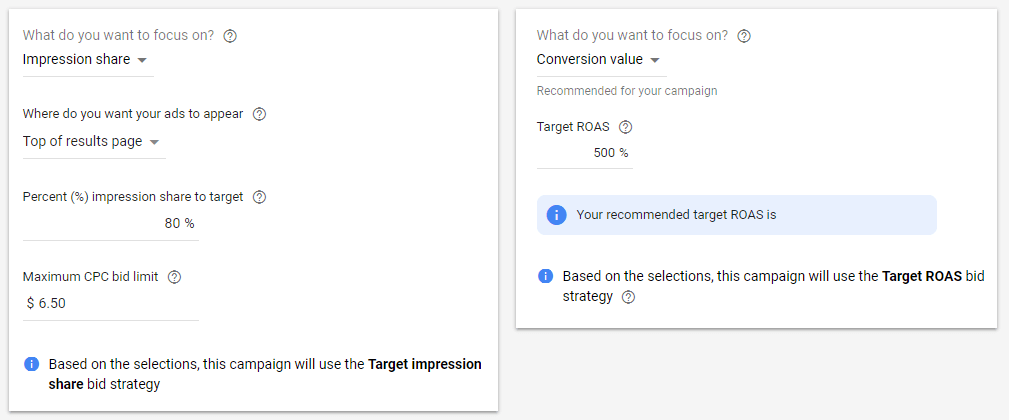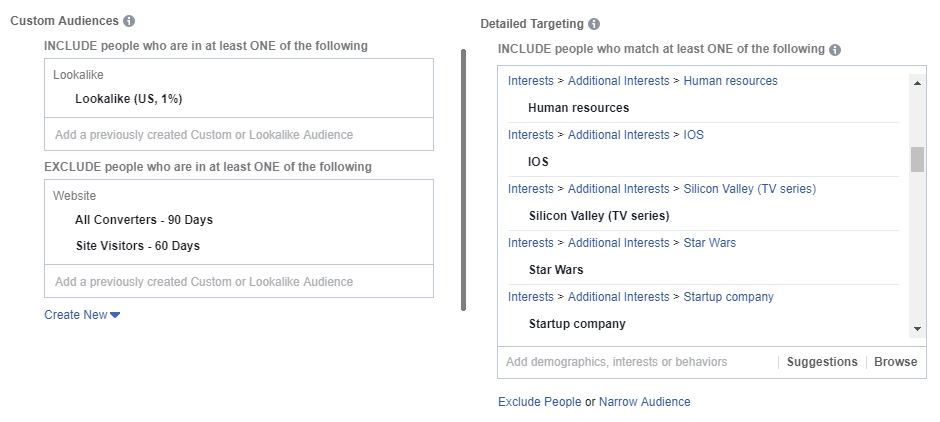PPC Search Trends of 2019
2019 marks an exciting time in the digital marketing world. We are now moving into an era where AI is being successfully integrated into the way account managers structure their ad campaigns. This is especially relevant to the use of AI in personalized marketing, which is continuing to increase in importance as users respond best to relatable messages.
The average consumer has more devices than ever, and the number of ways to reach our audiences is growing in turn. This, and AI integration, give PPC marketers new opportunities to better use the unprecedented amount of data and analytics at their fingertips.
In an effort to prepare for a year saturated with disruptive changes, I’ve touched on some of the top paid search marketing trends to be ready for.
Automation Will Allow PPC Managers To Focus on Strategy
Smart bidding is an automation tool that will take the grunt work off the account manager and allow them to focus on creative strategy.
Each smart bidding strategy is appropriate for a different goal. For example, the ‘Target search page location’ and ‘Target outranking share’ bid strategies allow you to increase visibility and outrank competitors more consistently. ‘Maximize clicks’ allows Google Ads to automatically set your maximum CPC by taking your target daily budget into account.
Target CPA and Target ROAS work similarly to each other in that you set a goal for either metric, and Google Ads uses machine learning to optimize your bids at auction time to hit your goal.

 While these paid search tools are incredibly useful for account managers, it is important that these campaigns are closely monitored. A new campaign with little historical data, or skewed conversion data, may not provide accurate information for the machine learning algorithm to make proper bid adjustments.
While these paid search tools are incredibly useful for account managers, it is important that these campaigns are closely monitored. A new campaign with little historical data, or skewed conversion data, may not provide accurate information for the machine learning algorithm to make proper bid adjustments.
Furthermore, the user journey can be complicated and unpredictable, often requiring a more granular approach with human control. Speaking on the growth of machine learning in paid search marketing, Frederick Vallaeys of Optmyzr stated, “It won’t be a race to see whether humans or machines are best. It will be a race to see which PPC experts have the best process to leverage the machines to blow away their competition.”
Smart bidding is fast, but it is not as fast and accurate as human intelligence supported by machine learning tools. Paid search account managers: your job is safe – but you will need to incorporate automation into your campaigns to outpace competitors.
Audiences Will Be Prioritized Over Keywords
Know your audience. We’ve all heard it, but this paid search marketing best practice is becoming increasingly imperative as search engine marketers’ focus shifts away from keywords. Knowing your audience and being able to serve them ads that are as relevant and personalized as possible will be very important this year.

If you are a paid search marketer and you have not put together a comprehensive audience targeting strategy, let this serve as a wake-up call.
The search marketers who will be successful in 2019 are those who not only know their audience (and what audiences to exclude), but have successfully segmented them into groups with specifically tailored tactics. If automation is saving you time (which it should), use that time to create highly-optimized customer segments.
Market to Your Audience on Multiple Channels
Our audiences have access to a growing number of platforms on which we can serve them ads.
- There are over 3 billion active social media users.
- The average user has more than 7 different social media accounts.
Users constantly switch between different devices and channels, creating a plethora of opportunities for marketers. Effective PPC marketers are able to bridge the gap between paid search and social media by retargeting users as they consume content on different platforms.
![]()
Wesley Maclaggan of Marin Software explains that, “As the worlds of search, social and ecommerce blend together, marketers will need a complete view of the entire customer journey” to plan and measure campaign performance. While it has become easier to create multi-channel campaigns, there is unfortunately no one-size-fits-all model for cross-channel advertising. Because of this, account managers need to build campaigns based on innovative retargeting strategies and closely monitor them to assess performance.
SEO & PPC Go Hand In Hand
Organic and paid search initiatives should be collaboratively approached, rather than as separate silos. For example, paid search reports in the Google Ads interface provide valuable insights for keyword research. You can target competitors’ keywords by analyzing the Auction Insights Report. Boost your organic clickthrough rate by incorporating keywords from top-performing ad copy into the metadata of your high-traffic web pages.
Ad copy that generates a high CTR should also be used as a guide for creating blog content that is relevant to both your audience’s interests and your brand. Similarly, longer tail terms that you rank for organically can be used in your paid search bidding strategies to ensure consistent messaging.
It All Comes Together
The recurring theme in 2019’s critical marketing trends is integration. Machine learning is being integrated into paid search marketing campaigns. Collecting data on your audiences and combining it with your marketing goals is crucial for creating an effective PPC audience targeting strategy. Users must be reached through campaigns that communicate a consistent message on multiple platforms, which are optimized for multiple devices. SEO and PPC strategists must collaborate to make the most efficient use of the data available and to stay ahead of competition.
At Titan Growth, experts in SEO, Paid Media, and Social Media Marketing collaborate to provide the best possible opportunities for the development of our clients’ brands. Learn more about our team and our proprietary TitanBOT technology that gives us and our clients the competitive edge.


